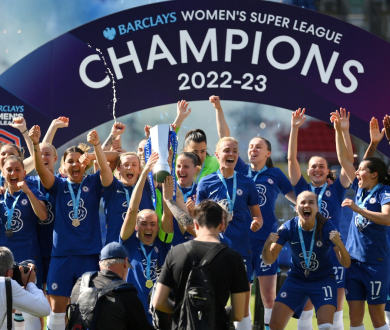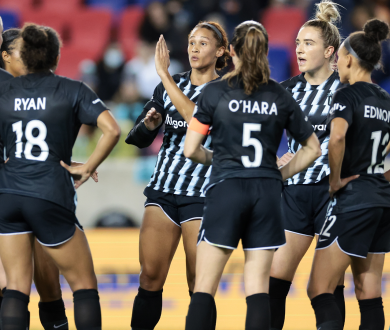
Sports Rights Holders: The Investment Opportunity
Introduction:
In the ever-evolving sports industry, the role and influence of sports rights holders and institutional investment continues to be paramount…
Sports rights holders are organizations or entities that own, control, and administer the exclusive rights to various elements of sports competitions. They exist in a diverse array, ranging from national and international governing bodies to individual sports leagues. For example, national and international sports federations, such as FIFA, the International Olympic Committee (IOC), and the International Cricket Council (ICC), are responsible for overseeing and governing their respective sports on a global scale. On the other hand, sports leagues, such as the National Football League (NFL), the English Premier League (EPL), and the National Basketball Association (NBA), hold rights to specific leagues or competitions within a particular sport. These rights holders play a crucial role in shaping the global sports ecosystem by managing, protecting, and commercializing the assets associated with sporting events.
Over the past decade, the sports industry has witnessed a significant surge in external investment, attracting the attention of large financial institutions, private equity firms, and venture capitalists. From high-profile acquisitions of sports franchises to strategic investments in media rights and technology-driven fan engagement platforms, institutional investors have recognized the immense growth potential and global appeal of sports. For organizations within the sports industry these investors can provide a number of benefits including financial stability, strategic expertise and access to capital markets. In return these investors can gain a share of long-term contracted recurring revenues.
However, whilst investment into sports teams has become increasingly prominent over the last decade, investment into sports rights holders appears to be in the early stages of a trend and the opportunity remains relatively untapped. Throughout this white paper, we’ll discuss how sports rights holders and investors can strategically come together in the coming years and the upsides that can be achieved in doing so.
Current Context:
The Rights Holder Landscape:
Each sports rights holder typically encompasses a number of unique assets which are leveraged to generate revenues and drive growth. These primary assets includes:
Media rights - usually the most valuable of these primary assets, this includes allowing third parties the right to broadcast, stream, and distribute live sporting events to audiences worldwide in return for yearly recurring revenues. Growth of these rights is largely predicated on leveraging ways to enhance the broadcasting product.
Sponsorship rights - typically the second most valuable asset, this entails the collaboration between brands and sports entities, enabling sponsors to associate their products or services with the sports competition in return for significant cash payments. Growth of these rights is largely predicated on leveraging ways to increase the popularity and engagement in the sport or competition.
Hosting rights - the least common of the three primary assets yet nevertheless a revenue generator for certain rights holders. This grants organizations the privilege of hosting major sporting events and competitions (e.g. Formula 1), allowing them to benefit from increased tourism, infrastructure development, and international attention in return for significant cash payments. Like sponsorship rights, growth of these rights is largely driven by the popularity and engagement in the sport or competition.
Ultimately, for sports rights holders, the biggest driver of growth lies in increasing the value of these premium rights.
Illustrative Current International Federation Operating Model:
The model below represents an example of a high level operating state that the majority of International Federations are currently operating within.
As alluded to earlier, there are a number of different types of sports rights holders. International federations are one of the more common types that we will discuss as an example in the following section. In their current state, International Federations are predominantly reliant on their media and sponsorship rights for generating the majority of their revenues, in addition to IOC disbursements for Olympics sports. In the case of an IF, these revenues are typically spent on governing the sport, the hosting of competitions and events and more importantly reinvesting back into the development of the sport from grassroots upwards. Alongside IOC disbursements, the value of the federation’s rights dictates a large proportion of the revenue it receives and ultimately the amount that can then be reinvested into enhancing the level of the sport / competition.
However, as point 4 suggests, in the current state, the majority of International Federations typically lack financial resources which are prioritized and dedicated towards initiatives for growing and enhancing the value of their future rights. Instead they are reliant on the organic, long-term growth of their rights which they hope to achieve through increased popularity and participation in the sport over time. Thus, the challenge with the way that the majority of International Federations are currently operating is that they are not set up or oriented towards accelerated future growth.
The Sports Investment Landscape:
Sports rights have emerged as the cornerstone of future growth for sports rights holders. As such, it comes as no surprise that in the last few years some sports rights holders have begun opening themselves up to external investment as a way to help grow the future value of their rights, which in turn can improve the quality of the property as a product and allow further revenues to invest into sports development. Typically, as part of a deal with third party investors, the rights holder will cede a percentage of equity into a new entity which holds rights or cede a share of future revenues from rights sales (typically media or sponsorship rights) in return for upfront growth capital that allows them to invest in growth initiatives that seek to grow the future value of their rights. The value for the rights holder comes in the form of the upfront cash investment plus the external strategic growth expertise that investors can bring. On the flip side, for the investors the main value comes in the form of long-term contracted recurring revenues which they hope to increase in value over time.
To put some of these investments into perspective, over the last five years CVC has emerged as one of the ‘big fish’ that has begun making investments into the sports rights holder space. The private equity firm has made a number of investments into several different rugby tournaments and competitions such as Six Nations, Premiership Rugby and Pro 14 Rugby, in the hope of growing and developing the game and further enhancing the sporting spectacle which will ultimately help drive its future growth. More recently, they’ve also made some significant investments into major football leagues such as La Liga and LFP (Ligue 1), committing reported investments of €1.99B and €1.5B respectively. Other sports rights organizations including FIBA and FIVB, and properties such as the New Zealand All Blacks and The Australian A Leagues have also opened up to external investment in recent years, further demonstrating the emerging growth appetite of rights holders.
It is fair to say however that whilst investment in the rights holder space has increased in the last five years or so it appears the trend is still in its early stages and it is expected the annual volume of deals is likely to grow in time. In the next section we’ll discuss the opportunity for sports rights holders and investors in the coming years and the synergy that can be achieved in coming together.
The Imperative to Act:
Rights Holders:
External investment can accelerate the growth of Rights Holders and prevent them from falling behind other competing properties.
As can be seen in the diagram above, external investment provides rights holders with a growth opportunity to increase the long-term value of their rights. Using the upfront cash provided by investors, rights holders can invest into a number of different projects and initiatives that seek to enhance the quality of their sport / competition e.g. infrastructure development, new technology and innovations, digital transformation strategies to improve fan engagement / experience etc (see levers of growth section below). If the federation effectively utilizes the growth capital and successfully increases the value of their rights, this should lead to increased future cash flow that ultimately outweighs the value lost from the percentage of rights that were initially ceded.
Investors:
The sports industry is an enticing market for investors due to its enduring popularity, global reach and diverse array of revenue streams (i.e. media rights, sponsorship deals, ticketing and merchandise sales etc), which collectively create a dynamic and resilient investment landscape. From an investor perspective there are a number of incentives for specifically investing at the sports rights holder level. The most obvious of these is the significant long-term contracted revenues that can be gained through investing in and securing a share of future right sale revenues. Additionally, compared to investing at a ‘club level’ there are reduced risks and downsides on costs through absence of relegation and an environment of sustained wage inflation which erodes the bottom line. Investment at the rights holder level is also essentially wagering on the success of a wider sport as opposed to being solely dependent on the success of a single club. There are also some wider advantages / similarities to investing in other sporting assets such as stronger barriers to market entry and loyal fan / consumer bases. Lastly, as mentioned earlier, the rights holder investment market remains relatively untapped, meaning for investors there are currently a diverse range of sports and properties to choose from.
In the next section, we’ll discuss what a potential future state growth model could look like post the coming together of sports rights holders and investors and the ways in which the external growth capital can most effectively be utilized.
Shaping the Future - A Structure for Shared Success:
Governance:
Illustrative Future Operating Model: Relationship between IF, SPV and Investor
The model below presents an example of a high level target operating state for International Federations after receiving external investment.
Typically, during a deal between the rights holder and a third party investor, a new entity or ‘special purpose vehicle’ (SPV) is created which receives the agreed percentage of rights that the rights holder cedes and the new external cash injection from the investor to spend on the ‘growth projects’. From an investment perspective, this usually comes from private equity firms whose main incentives are financial however it can alternatively come from a sports brand or media company who sees a broader strategic opportunity and is able to deliver further synergies to help the sport to grow faster i.e. having access to new or emerging markets.
Success for the investor is future cash flow from the long-term growth in the value of the acquired rights and as mentioned, for the rights holder this comes in the form of future cash flow from growth of their rights that eventually exceeds what was initially lost through the value of the share that has been ceded. Similar for both parties however is that this future cash flow is ultimately dependent on how effectively the upfront growth capital is used. In the next section we’ll discuss some of the growth capital deployment strategies we’ve seen in previous PE / Rights Holder deals to help accelerate future growth. However, to reiterate, the key difference in the above future state model is that the rights holder is now structured and set up with the resources required to accelerate future growth.
Levers of growth:
Growth capital from investors can be used across a number of different sporting and commercial initiatives. Some of the more common uses we’ve seen in previous PE / Rights Holder deals include…
The most effective use of growth capital is largely dependent on the current circumstances and priorities of the rights holder / sport and also the key pillars of their growth strategy. One of the more substantial sporting changes includes the reshaping of a sport or competitions calendar. For example, the newly revised Women's Tennis Association calendar includes new player entry rules that ensure a consistent presence of top athletes at events throughout the year, less overlap of events across the calendar to make it easier for fans to follow and the addition of new WTA tournaments in new locations to enhance the reach of the sport. On the sporting side some other higher costing initiatives include investment into infrastructure such as stadiums and training facilities or reinvesting funding back into the development of the sport across all levels. New technology and innovations that seek to improve the ‘quality’ of the sport or competition (e.g. Video Assistant Referee) is another common usage.
From a commercial perspective, investment is also made into content development to enhance the premium nature of the sport or competitions broadcasting product and to make it more appealing and engaging to its audience. New digital transformation strategies are also deployed (e.g. new OTT streaming platforms) that are used to improve accessibility of the sport to a wider audience. Investment into marketing of competitions or teams / athletes is another common strategy we’ve seen which ultimately seeks to spread awareness and help tell a more personal story / journey of the athletes. Similarly, international growth strategies are also utilized which aim to expand reach and awareness in new markets through initiatives such as new tournaments or new rights deals.
Ultimately, there are a wide range of growth projects that rights holders can engage in but it is imperative that whichever ones are selected are aligned with a well defined growth strategy with a clear roadmap for execution.
Conclusion / Moving Forward:
Investment into the sports rights holder landscape has increased in recent years and we anticipate this will continue to gain further momentum in the coming years. For sports rights holders, future growth of their premium rights can deliver increased revenues to reinvest back into the sport and opening up to external investment can accelerate this opportunity. For investors, there is an early opportunity to invest into an area of the sports industry that is becoming increasingly more growth oriented with the potential upsides of long-term contracted revenues that have the possibility to significantly increase over time.
Next Steps:
At Sportsology Group, we serve as a trusted advisor to the global sports industry leveraging our know-how and deep-rooted understanding of the industry to guide stakeholders through optimization and growth.
For Rights Holders:
Prior to seeking investment and in order to attract investors it is essential to become ‘investor ready’ with a clear and aligned plan for how you intend to execute on your growth strategy and which strategic projects / initiatives will drive this. If you are considering external investment, we can support you across a number of ways including; evaluating the case for external investment, strategy definition, becoming investor ready and if required, investment sourcing from our network of strategic, sophisticated and long-term investors.
For Investors:
If you are considering a rights holder property investment, our experienced advisory team has supported a number of investor groups with detailed market intelligence, deal sourcing and due diligence services. We can help you to understand the market at a macro level, honing in on the sports / properties of interest and provide you with a detailed opportunity analysis, due diligence, all the way through to supporting the execution of a deal.
Enter your information below to get in touch with one of our experts for further information.
Credits: Kieran Adamson and Richard Battle











